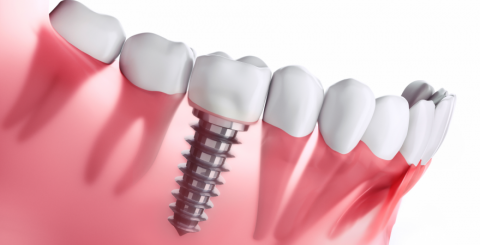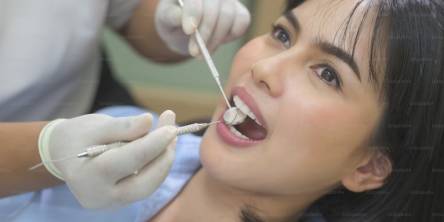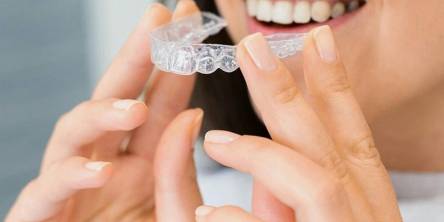What You Need to Know About Endosteal Implant?

When you lose an adult tooth, it is critical for your dental health that you replace it. If you don't, you risk teeth moving, increased oral instability, and tooth loss. It could harm the underlying bone. An endosteal implant, often known as a dental implant, is one option for restoring missing teeth. This type of implant is permanently lodged into your upper or lower jaw bone during a multi-step operation.
Best Candidates for Endosteal Implants
Because endosteal implants are implanted in bone, the operation can be invasive and time-consuming. As a result, the treatment may not be appropriate in all circumstances. It is not advised for youngsters or teenagers whose jawbones are still forming.
Furthermore, the following conditions may preclude you from being a candidate for endosteal implants:
- Diabetes, osteoporosis, and high blood pressure (hypertension) are examples of pre-existing medical disorders.
- Jaw bone strength is insufficient.
- Gingivitis, periodontitis, or other gum diseases.
- Smoking, though it may not completely rule out the operation.
You may need to be treated for or manage these conditions before receiving an endosteal implant.
Implant Process
The procedure to insert a dental implant is relatively invasive, requiring some deep incisions. An oral or maxillofacial surgeon is responsible for this work. The operation is typically performed under local anesthetic, so you will be awake but have your mouth numbed.
The endosteal implant procedure consists of three major steps:
- Imaging and placement: To assess the area where your teeth are missing, a dental X-ray or another sort of imaging technique is used. Following that, the surgeons make a small incision in the gum and drill a hole into the bone. They may use a surgical guide and stent to insert a specific screw or cone, referred to as the "implant body," into this region, leaving a gap.
- Putting on a temporary crown and healing: The surgeon adds an extension, known as an "abutment," and a temporary crown is placed either during the first session or at a subsequent appointment. Following that, you must go through a healing period that can last anywhere from a few weeks to many months as bone tissue forms around the screw. This is known as "osseointegration."
- Installing a permanent crown: You're ready for the last stage two weeks after the temporary crown is put in. The abutment receives the false tooth, also known as a prosthesis or crown. The prosthetic is tailored to fit perfectly into place using scanning technologies. It's color-matched to the surrounding teeth to look natural.
If several teeth are missing, a dental bridge—a fake tooth or group of teeth linked to the implant—can be used. In addition, if several teeth are missing, dental implants can be utilized to anchor rows of dentures.
Aftercare
You will have various side effects at each stage of the treatment, especially once the endosteal implant body is installed into the bone. These include:
- Some bleeding may occur within the first 12 to 24 hours following the surgery.
- Pain and discomfort in the afflicted area
- Face or mouth swelling for the first two to three days following surgery
- Temporary numbness in the lower jaw in rare circumstances
There are various things to remember during the first week after surgery, which is a vital phase of recovery:
- Antibiotics will be given to you to prevent infection as the wound heals.
- You will be given instructions on how to clean and care for your implant.
- Certain foods that are difficult to chew must be avoided.
- Certain exercises or physical activities may have to be avoided.
- To stop bleeding, dab excess blood with dry gauze and then apply wet gauze to the affected region for 20 minutes.
- For the first 12 hours after surgery, avoid moving your head too much.
- Don't use a straw because the suction can cause stress on the surgical site.
You'll also be shown how to take care of your implant appropriately, including how to brush and floss safely. Follow those instructions carefully and plan to return in two weeks for a check-up.
Similar Articles
Teeth and gums form a complex system that functions daily and continuously. We often underestimate their importance until pain, sensitivity, or other unpleasant symptoms arise.
You take a sip of iced water, and suddenly, one tooth lights up with a sharp sting. That quick shock is more than annoying; it can change what you eat, how you drink, and even how you breathe in cold air.
In the past, correcting misaligned teeth meant committing to years of highly visible metal braces, diet restrictions, and frequent, sometimes uncomfortable, adjustments
Baby teeth can cause a lot of worry for parents, especially when things do not seem to happen on
Ever caught yourself hiding behind your hand during a good laugh? Or dodging the camera at family gatherings? Those small chips, stubborn stains, or awkward gaps in your teeth can chip away at your confidence year after year.
When most people think about straightening their teeth, they envision traditional metal braces. However, because of recent advances in orthodontics, there are now more discreet, pleasant, and efficient solutions available.
Healthy gums not only ensure a beautiful smile but are also essential for overall oral health. However, conditions often arise that require surgical intervention in addition to dental treatment.
A tight booking calendar, a last-minute casting call, and a grin that has to look flawless by Friday—life as a Harlem creative rarely leaves space for dental upgrades
Gingivitis is an inflammation of the gums caused by the accumulation of plaque and bacteria.









